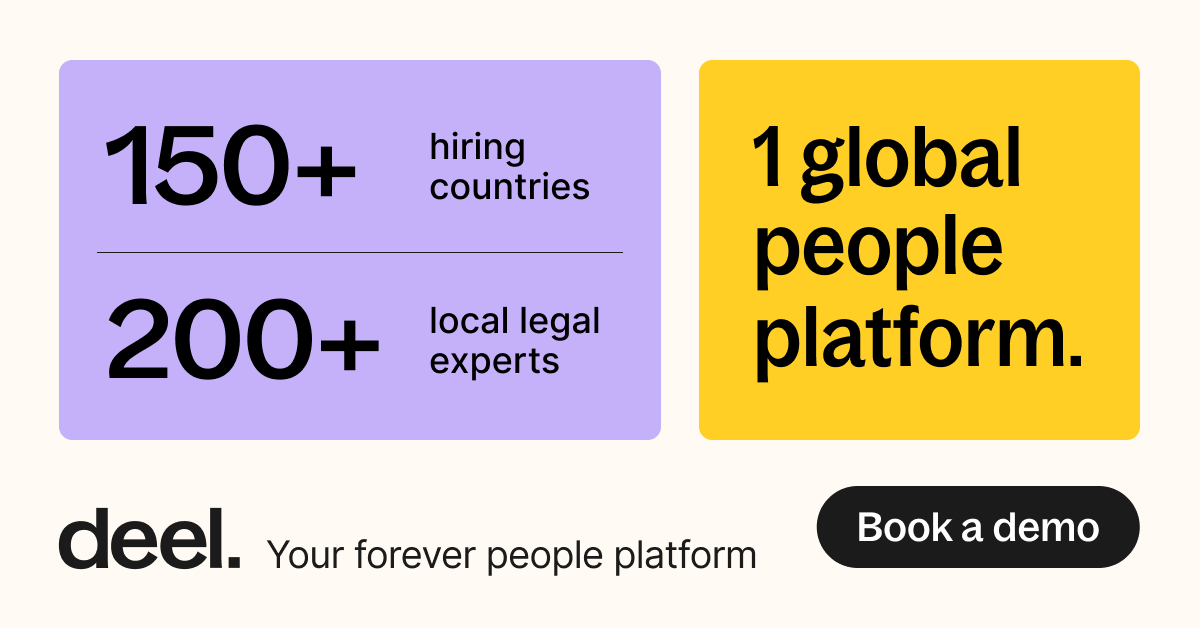The global landscape in 2025 is characterized by a complex interplay of interconnected threats, often termed a ‘polycrisis. As we navigate the mid-decade, the convergence of escalating environmental pressures, persistent geopolitical instability, rapid technological advancements, and deepening societal fissures presents unprecedented challenges. Businesses small and large operate within this volatile context, facing heightened uncertainty and the need for enhanced strategic foresight. Understanding the most critical risks is paramount for building resilience and identifying opportunities amidst disruption. Shifts in US trade policy, conflicts in South Asia and the Middle East, South China Sea tensions, etc suggest no end in sight to the range of global threats facing SMEs and large enterprises worldwide. These flashpoints have implications for economic growth worldwide, global workforce strategies, supply chain risks, international market expansion strategies, etc.
In this article, we dive into an assessment of the global threat outlook as we head into 2H 2025. Our analysis and interpretation draw heavily on the findings of the World Economic Forum’s (WEF) Global Risks Report 2025. We also supplement this assessment with perspectives and insights from the team at ClearSky 2100 Ventures to reflect current developments. We attempt to delineate the top global risks for business in the coming year and explore their implications for global competitiveness. Despite the perceived risks, emerging cross-border opportunities exist for small businesses worldwide. However, it’s important for businesses to recognize that proactive engagement with these risks is no longer optional; it’s essential for survival and sustainable growth. Be sure to follow us on LinkedIn. Now let’s get started.
Disclosure: At ClearSky 2100 Ventures, our Growth Partner Network partly consists of affiliate partnerships. We may earn a small commission from buying links on our site at no cost to you.
Over the near term, we believe the upside and downside risks from US shifts in trade policy will be capped as public and private stakeholders realign to the new geoeconomic realities.
The Shifting Risk Landscape
The WEF’s Global Risks Report 2025, now in its 20th edition, provides a crucial benchmark for understanding perceived global threats. The WEF Global Risks Report draws its primary insights from the Global Risks Perception Survey (GRPS). The GRPS gathers insights from over 900 experts across academia, business, government, the international community, and civil society. Over 80% of the respondents anticipate an unsettled or turbulent outlook over the current period (2025), the short term (2027), and the longer term (2035).
The report emphasizes that while environmental risks, particularly extreme weather events and critical changes to Earth systems, dominate the long-term concerns (10-year horizon), the short-term (2-year horizon, relevant for 2025-2027) is marked by a potent mix of environmental, technological, societal, and geopolitical threats. This near-term outlook underscores the immediate pressures and challenges facing businesses and policymakers.
Top 10 Global Risks for 2025 (Ranked by Severity- 2-Year Horizon)
The WEF Global Risks Report 2025 identifies the following risks as the most severe perceived risks over the next two years. What is normally considered a high visibility time frame has become obscured by policy-making volatility and uncertainty and ongoing geoeconomic or business leaders. Consequently, this period possesses the most risk to small businesses with medium- and longer-term implications for global growth. These rankings reflect the collective assessment of global experts on the potential impact and likelihood of these threats materializing and significantly disrupting global stability and commerce.
- Misinformation and Disinformation: The deliberate and accidental spread of false information, amplified by AI and social media.
- Extreme Weather Events: Increased frequency and intensity of floods, droughts, wildfires, heatwaves, and storms.
- Societal Polarization: Growing divides within societies based on ideology, identity, and economic status, leading to instability.
- Cyber Insecurity: Increasing sophistication and frequency of cyberattacks targeting critical infrastructure, businesses, and individuals.
- Global Armed Conflict: Escalation of conflicts between nations, disrupting trade, supply chains, and geopolitical stability.
- A Growing Economic Divide: Insufficient job creation, wage stagnation, and limited pathways for economic advancement are fueling discontent.
- Inflation: Persistent and widespread increases in the general price level, eroding purchasing power and impacting business costs.
- Involuntary Migration: Large-scale movement of people due to conflict, climate change, economic hardship, or persecution.
- Economic Downturn: Significant slowdowns in the US and other major economies, potentially leading to recession, reduced investment, and job losses.
- Pollution: Air, water, soil, and plastic pollution impacting human health, ecosystems, and economic activity.
Analyzing the Top Risks and Their Business Implications
Let’s delve deeper into each of these top 10 risks and their specific consequences for the business environment in 2025 and into 2026.
1. Misinformation and Disinformation
- Nature of the Risk: Fueled by AI-generated content, social media algorithms, and state-sponsored campaigns, the erosion of trust in information sources destabilizes political processes, public health responses, and social cohesion.
- Business Impact: Businesses face significant reputational damage if targeted by disinformation campaigns. Consumer trust can evaporate quickly, impacting sales and brand loyalty. In a recent study, 81% of consumers say that trust is a deal breaker or deciding factor in buying decisions. Financial markets can be manipulated through false narratives. Internally, misinformation can sow discord among employees and undermine corporate culture. Companies in the media and technology sectors are under intense and constant pressure to moderate content effectively, facing regulatory scrutiny and public backlash. The need for robust brand monitoring and crisis communication strategies is critical.
2. Extreme Weather Events
- Nature of the Risk: Climate change continues to drive more frequent and severe weather phenomena globally. Heatwaves impact productivity and health, droughts strain water resources and agriculture, floods damage infrastructure, and storms disrupt logistics.
- Business Impact: Supply chains are highly vulnerable, with disruptions impacting manufacturing, transportation, and inventory management. Agricultural businesses face crop failures and volatile commodity prices. Insurance costs are rising sharply, impacting profitability across sectors. Infrastructure damage requires costly repairs and can halt operations. Businesses need to invest heavily in climate adaptation measures, diversify supply chains, and potentially relocate critical assets. There is also growing pressure for businesses to demonstrate credible decarbonization strategies, aligning with frameworks like those discussed in ClearSky 2100’s focus on sustainable innovation.
3. Societal Polarization
- Nature of the Risk: Deepening societal divides, often exacerbated by economic inequality and identity politics, lead to political instability, protests, and erosion of social contracts. This can manifest as culture wars, political gridlock, and reduced government effectiveness.
- Business Impact: Polarization creates volatile operating environments. Businesses may be caught in the crossfire of political disputes, facing boycotts or protests from different factions depending on their perceived stance or actions. Attracting and retaining a diverse workforce becomes more challenging as polarization intensifies across societies. Political instability can deter foreign investment and lead to unpredictable policy changes. Companies must navigate these sensitive issues carefully, fostering inclusive internal cultures while managing external political risks.
4. Cyber Insecurity
- Nature of the Risk: Cyber threats continue to evolve rapidly, with ransomware, state-sponsored espionage, critical infrastructure attacks, and data breaches becoming more sophisticated and frequent. The increasing reliance on digital systems expands the attack surface.
- Business Impact: The costs associated with cyberattacks are immense, including operational downtime, data recovery expenses, regulatory fines (e.g., GDPR, CCPA), reputational damage, and loss of intellectual property. Critical infrastructure sectors (energy, finance, and healthcare) are prime targets, with attacks having cascading effects on the economy. Businesses require continuous investment in cybersecurity measures, employee training, incident response planning, and cyber insurance. The interconnectedness of digital supply chains means a vulnerability in one partner can impact many others.
5. Global Armed Conflict
- Nature of the Risk: Geopolitical tensions remain high in several regions, with ongoing conflicts and the potential for new ones to erupt. These conflicts disrupt international relations, trade routes, and energy supplies.
- Business Impact: Conflicts directly impact businesses operating in or sourcing products or natural resources from affected regions. Global supply chains face severe disruption (e.g., shipping routes, energy prices). Sanctions and trade restrictions create complex compliance challenges and limit market access. Geopolitical uncertainty dampens investor confidence and can lead to capital flight. Defense spending may increase, creating opportunities for some sectors but diverting resources from others. Businesses need robust geopolitical risk assessment capabilities and contingency plans for supply chain and market disruptions.
6. Lack of Economic Opportunity
- Nature of the Risk: Despite tight labor markets in some advanced economies, concerns persist about job quality, wage growth, automation’s impact, and access to skills training, particularly for youth and marginalized groups. This fuels social unrest and political instability.
- Business Impact: A lack of opportunity can lead to skills shortages in key areas, hindering growth. However, in recent years the US has witnessed a resurgent interest in trade jobs, with many students forgoing college for high-wage opportunities in sectors such as construction, manufacturing, etc. Businesses face pressure to improve wages, benefits, and working conditions and to invest in workforce development and reskilling programs.
7. Inflation
- Nature of the Risk: Recent adjustments to US trade policy have resulted in a renewed focus on inflation risks. Underlying pressures (geoeconomic instability impacting energy/food prices, tight labor markets, and supply chain adjustments) could keep it elevated or cause a resurgence. Central bank responses (interest rate hikes) aim to control inflation but also risk slowing growth.
- Business Impact: Inflation increases operating costs (raw materials, energy, wages), potentially squeezing profit margins. Businesses must decide whether to absorb costs or pass them on to consumers, risking demand reduction. It complicates financial planning and investment decisions due to uncertainty about future costs and interest rates. Consumer purchasing power is eroded, impacting demand for non-essential goods and services. Effective cost management, pricing strategies, and hedging against input cost volatility are crucial.
8. Involuntary Migration
- Nature of the Risk: Driven by conflict, climate change impacts (sea-level rise, desertification, and water scarcity), and lack of economic opportunity, large numbers of people are forced to move within or across borders, often under duress. According to analysts, roughly 1.2 billion could be displaced due to climate change.
- Business Impact: Large migration flows can strain public services and infrastructure in receiving regions. They can also lead to social and political tensions. The world is becoming more urban, with rapid megacity growth and global urbanization rates expected to approach 70% by 2050. For businesses, migration presents both challenges (potential labor market disruptions, integration costs) and opportunities (access to new labor pools, potential for new consumer markets). However, unpredictable policy responses and potential exploitation risks require careful management and ethical considerations in hiring practices. Businesses operating in regions prone to climate-induced migration face direct operational risks.
9. Global Economic Downturn
- Nature of the Risk: The cumulative effect of high interest rates, persistent inflation, geopolitical shocks, and slowing global trade increases the risk of significant economic slowdowns or recessions in major economies.
- Business Impact: A downturn leads to reduced consumer spending and lower demand for goods and services across most sectors. Businesses face tighter credit conditions, making borrowing more expensive. Investment plans may be postponed or cancelled. Layoffs and cost-cutting measures become more common. Companies with high debt levels are particularly vulnerable. Resilience requires strong balance sheets, operational efficiency, and the ability to adapt product/service offerings to changing market conditions.
10. Pollution
- Nature of the Risk: Air, water, soil, and plastic pollution continue to pose significant threats to human health (respiratory illnesses, contaminated water) and damage ecosystems, impacting biodiversity and natural resources.
- Business Impact: Businesses face increasing regulatory pressure to reduce emissions and waste (e.g., carbon pricing, plastic taxes, stricter environmental standards). There is a divergence emerging between the US and European regulatory frameworks. Reputational risks are high for companies perceived as major polluters. Clean-up costs and liability for environmental damage can be substantial. Sectors like agriculture, fisheries, and tourism are directly impacted by environmental degradation. Conversely, there are growing market opportunities in pollution control technologies, circular economy business models, and sustainable products.
Interconnections and Systemic Threats
As businesses evaluate these risks, it’s important to understand they are not isolated but interconnected. For example:
- Climate and Conflict: Extreme weather events (Risk 2) can exacerbate resource scarcity, contributing to involuntary migration (Risk 8) and potentially fueling global conflict (Risk 5).
- Technology and Society: Misinformation (Risk 1) thrives on digital platforms, deepening societal polarization (Risk 3) and potentially being weaponized in cyber warfare (Risk 4) or global conflict (Risk 5).
- Economy and Society: Lack of economic opportunity (Risk 6) and inflation (Risk 7) can fuel societal polarization (Risk 3) and contribute to economic downturns (Risk 9).
This interconnectedness creates the potential for systemic failures, where shocks cascade through global systems—financial, ecological, and societal—with unpredictable and severe consequences. Businesses must therefore adopt a holistic view of risk, understanding these complex interdependencies.

Integrating Perspectives from ClearSky 2100 Ventures
The WEF report provides a high-level framework to identify the nature of the risks and the general business impact. Over the near term, we believe the upside and downside risks from US shifts in trade policy will be capped as public and private stakeholders realign to the new geoeconomic realities. For US SMEs, managing through the near-term volatility is key versus throwing in the towel. Despite the perceived uncertainty, companies should approach risk assessment in a clinical manner irrespective of political persuasion or wishful thinking. Adopting this approach may uncover opportunities not before understood.
The recent announcement regarding tariff consensus between the US and China suggests a reversion to the mean is underway. Expanding these risk frameworks through deeper dives may uncover new opportunities. It also allows companies to wade through the noise. As businesses evaluate longer-term trends, workforce transformation, AI disruption, and socio-demographic trends will offer businesses new areas of growth to ensure business survival.
Other sources, such as reports from McKinsey, Deloitte, the IMF, and S&P Global, consistently echo the WEF’s concerns, often providing sector-specific analysis. They highlight the need for digital transformation (to combat cyber risks but also leverage AI), supply chain regionalization (to mitigate geopolitical and climate disruptions), and a greater focus on ESG (Environmental, Social, and Governance) factors in investment and operational decisions. The consensus points towards a future where resilience, adaptability, and a commitment to sustainability are key determinants of business success.
Mitigating Risk: Maximum Flexibility Needed Near-Term
Finally, the global risk landscape in 2025, as detailed by the WEF Global Risks Report and corroborated by other analyses, presents a formidable array of challenges for the business community. However, based on the views of ClearSky 2100 Ventures, we do see risks to the upside for small businesses. The confluence of misinformation, climate impacts, societal divisions, cyber threats, and geopolitical instability demands heightened vigilance and strategic adaptation. As such, businesses can no longer afford a reactive stance; proactive risk management, focusing on building resilience across operations, supply chains, and workforces, is imperative.
Embracing innovation, particularly in sustainable technologies and digital security, will be crucial. Furthermore, fostering global collaboration and partnerships, as advocated by organizations like ClearSky 2100 Ventures, can unlock collective solutions to shared challenges. Keeping a steady approach and wading through the noise is key. Navigating the polycrisis of 2025 requires not only managing threats but also identifying the opportunities inherent in transition, ultimately shaping a more sustainable and stable future for business and society alike.











